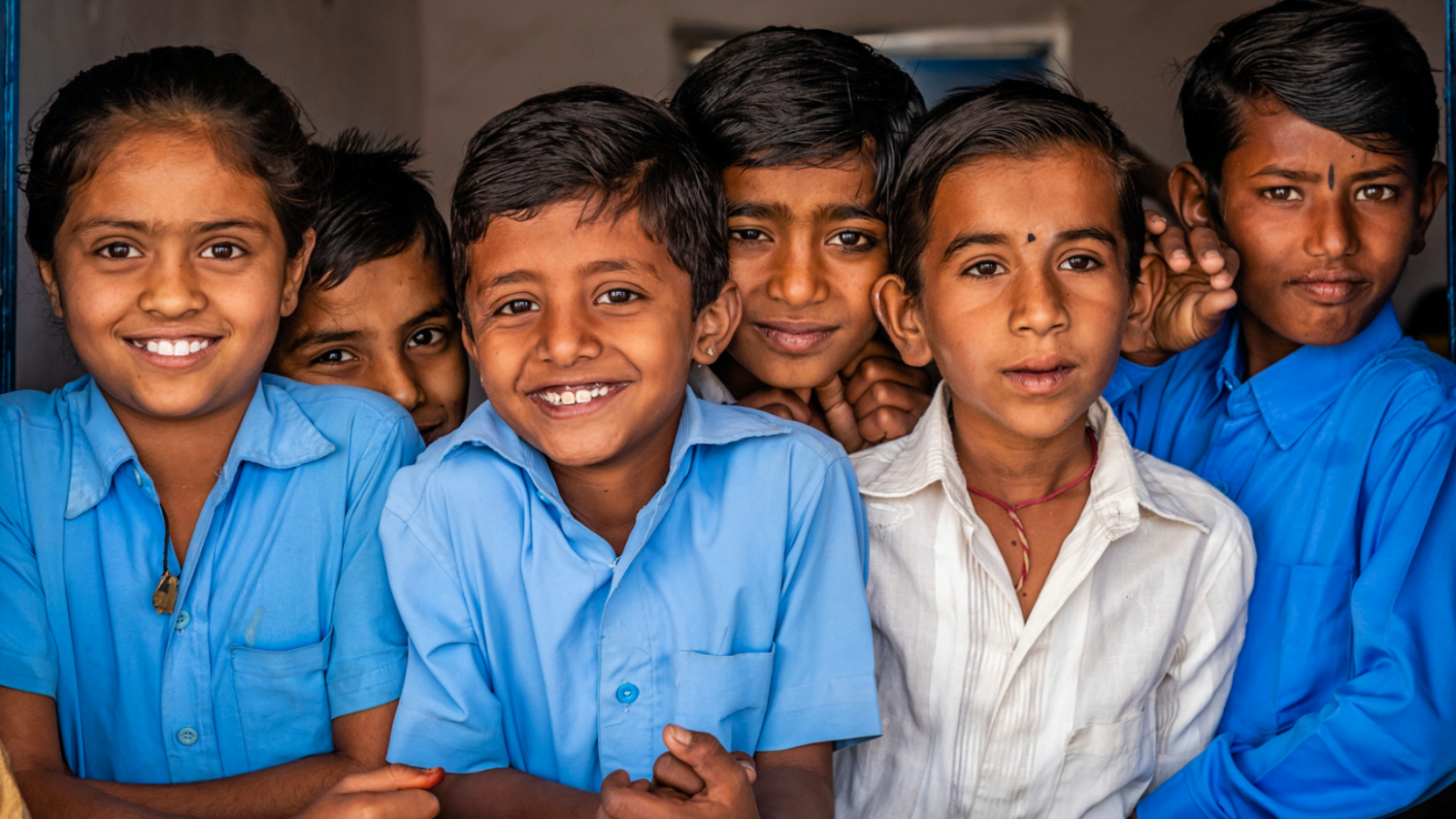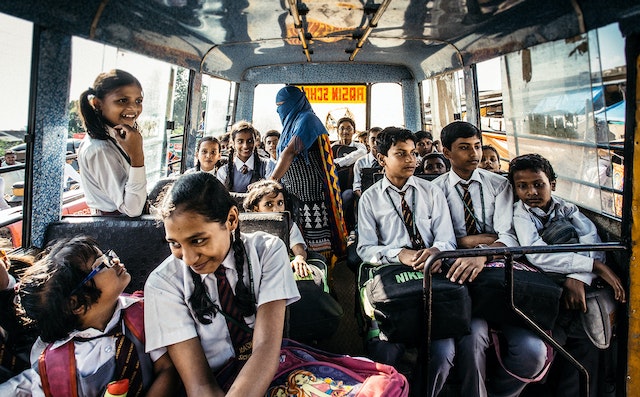
Starting from Scratch | The Role of Parents, Teachers, and Tech in Early Childhood Education during COVID-19
A study of 650+ households and 50+ teachers
Introduction and Context
Early Childhood Education (ECE) has become increasingly recognized as crucial to the development of children (Karoly et al, 1998), with opportunities for cognitive development being most optimal up to the age of eight years (UNICEF, 2012).
The literature emphasizes the crucial role of parental engagement in improving the learning capabilities of children (Lin, 2003; Nokali et al., 2010; Cunha et. al, 2006), especially for students in the age group of 3-6 years who are unable to learn independently (Schroeder and Kelley 2010). The COVID-19 pandemic and continued school closures for ECE have made the role of parents in engaging their children in education far more crucial than before (UNICEF 2020).
Various barriers, however, prevent caregivers from engaging in the education of their children, including; low self-efficacy of parents in the use of technology (Povey, et al., 2016); low motivation to engage in ECE; lack of knowledge, and self-efficacy on methods to facilitate learning (Taylor & Wright, 2019; Dighe & Seiden, 2020); and socio-economic disadvantage that might prevent households from accessing educational materials. In the context of the COVID-19 pandemic, disadvantaged households might also struggle to prioritize ECE, due to financial and emotional stressors associated with the pandemic (Brown et al., 2020; Liu et al., 2020).
Despite its importance, little attention has been paid to the continuance of ECE during the pandemic. In the context of India, there has been no systematic evidence on the status of ECE delivery during the pandemic. This report presents evidence on the status of ECE, eighteen months into the Covid-19 pandemic in India, and showcases the varied and crucial roles that technology, teachers, schools, and parents have played in the delivery of ECE during this period.
Study Design
We collected data from 676 low-income urban households enrolled in the studied pre-schools and conducted in-depth interviews with 58 teachers employed in balwadis and Akanksha schools. Data was collected between April and June 2021, at the height of the second wave of COVID-19 in Maharashtra.
We study the delivery of ECE in two categories of pre-schools – balwadis and pre-school grades of Akanksha schools. Both these pre-schools aim to cater to low-income households in Mumbai and Pune, Maharashtra. Balwadis are dedicated ECE centres, run by different NGOs through a Public-Private-Partnership (PPP) model with the Municipal Corporation of Greater Mumbai (MCGM). The Akanksha Foundation is an NGO that runs 17 “innovative schools” with pre-school grades for low-income households, in partnership with MCGM and Pune City Municipal Corporation (PCMC). In response to the pandemic, a structured tech programme for ECE (the E-Paathshala program) was piloted in both pre-schools, in partnership with Rocket Learning between January and June 2021.
While all households were enrolled in pre-schools that received the tech program, not all households enrolled in balwadis participated in the program. Households in our sample were thus split into three groups based on participation – Group 1 households are enrolled in balwadis and not participating in the tech program, Group 2 are also enrolled in balwadis and are participating in the tech program, and Group 3 are enrolled in Akanksha schools and participating in the tech program. The basis of separating households enrolled in Akanksha schools from those in balwadis was the “structured” nature in which Akanksha households received support from teachers, compared to in balwadis where continuance of ECE and parental engagement was determined by the initiative of individual teachers and NGOs running balwadis.
Findings
The status of ECE during COVID-19
1.1 With the shift to digital education, class sizes by enrollment and regular attendance fell considerably
Enrollment in virtual classes fell by 30-40%, while the class size for those regularly attending and engaging in ECE in virtual classrooms fell by up to 60%, compared to pre-pandemic class sizes. This was attributed to 1) inaccessibility of devices and the internet, 2) parents being unable to invest time in their child’s education due to work and other care responsibilities, and 3) a lack of priority for ECE within households.
1.2 For those with access to virtual classrooms, Whatsapp was the primary mode of instruction, followed by live classes.
86% of households received education on Whatsapp, 56% used platforms like Zoom or Google Meet for live classes. The familiar and low-tech platform of WhatsApp (over live lessons) was preferred by teachers and parents.
1.3 Teachers expressed concerns over using digital modes for ECE and continued school closures. Teachers reported:
- They were wholly reliant on parents for continuing ECE delivery.
- Digital modes are not always effective for ECE: Many foundational concepts cannot be taught virtually, households don’t always have required teaching-learning materials at home, and assessing the progress of students is difficult.
- Home environments are not always conducive to learning and development: Many households are unable to teach in a play-based and child-friendly manner, and some home environments are hostile.
- Parents face several barriers in prioritizing and engaging in ECE: Teachers highlighted that parents did not have the knowledge, time, resources, and capacity to teach ECE, and further struggled with the use of technology.
Inequitable access to ECE during school closures
2.1 Households had to invest in teaching-learning materials, including devices to access education
The ability of households to invest in education determined their ability to access education during school closures, with about 24% purchasing smartphones, and 38% purchasing other educational materials during the pandemic.
2.2 Children share resources, and households are forced to choose which child will access education
Within households, children share devices for education. 52% of households had less than one device per child, with every three children sharing two smartphones on average. Importantly, 45% of households reported prioritizing older children’s use of devices for education, over ECE.
Tech and Teacher Support in parental engagement
Across various indicators of parental and child engagement, it appears that participation in the tech program was able to enhance parent and child engagement in ECE for those who participated in it.
Moreover, structured teacher and school support over and above the tech program further enhanced parental and child engagement.
Households participating in the tech program were also more willing to continue engaging in the tech program once schools reopen, compared to households not participating in it.
Teachers reported that parents have become more responsive and were allocating more time towards ECE due to the tech program. Moreover, they suggested that the structured tech program helped ease their workload, especially by minimizing the efforts required in creating and curating digital content appropriate for ECE. Some teachers even said they had learned new methods of teaching fundamental concepts and skills through these videos.
Mechanisms for Enhancing Parental Engagement
We find that the studied programs were possibly able to increase parental engagement in ECE by alleviating some of the barriers that prevent parents from engaging in and supporting their children’s education.
Low self-efficacy of parents in the use of technology; Teachers suggested that use of a low-tech and familiar platform like WhatsApp likely enabled parental engagement for those with access. Teachers and parents were further provided training on the use of technologies for effective ECE.
Low motivation to engage in ECE: Teachers suggested that the play-based and interactive content shared through the tech program was liked by most parents and children, motivating them to engage in activities. They also cited the benefit of the tech program’s “incentive system” (where teachers sent smiley faces and weekly report cards on the Whatsapp group) as motivating households to engage.
Lack of knowledge and self-efficacy on methods to facilitate learning: Teachers highlighted the innovation of the tech program where videos featured an adult performing educational activities with a child, showcasing the activity and methods for conducting the activity properly. They also suggested that structured teacher support in the form of regular and pre-planned parent-teacher interactions helped. These interactions were used to provide instruction to parents on effective methods of engaging their children and clearing their doubts on digital content and educational concepts.
Access to educational materials: Most teachers agreed that the content of the structured tech program was contextually appropriate most of the time, suggesting this was important for low-income or under-resourced households. That most activities can be carried out using home-based materials, minimizes the need for expenditure on educational materials, and prevents households from becoming demotivated due to the unavailability of materials. Teachers also supported this by suggesting alternative materials that could be used were not available, and in some cases by providing required materials.
Lack of priority for ECE, due to financial and emotional stressors during the pandemic: Alleviating some of the distress faced by disadvantaged households during the pandemic through providing non-educational support (such as well-being calls, rations, medical care, or access to educational materials including devices) enabled parents to prioritize ECE. Such efforts however must be supported institutionally by schools and the state, in the form of specific measures for disadvantaged households, and through dedicated personnel to prevent overburdening teachers with additional responsibilities.
Way Forward
The findings of this study can guide interventions in ECE delivery during school closures and beyond it, by pointing to the various innovations of the studied programs that might have alleviated barriers otherwise preventing parental engagement in ECE, in low-income and under-resourced contexts.
Opportunities for blended learning: Several teachers felt that aspects of the tech program could be retained in physical classrooms, through a blended mode of learning, for example as supplementary to classroom curriculum, even when schools reopen.
Sustainability: For those with access to devices and the internet, tech programs can be operationalized through the use of low-tech platforms and context-friendly content. The innovation of the studied tech program in creating content that teaches parents to teach can support parents in learning methods to facilitate meaningful engagement in their children’s education.
For households without access to digital education: similar practices – frequent parent-teacher interaction, teaching parents methods to engage effectively, and providing non-educational support (where required) – can be conducted through physical modes.
Scalability: Technology, despite the limitations, offers the benefit of cost-effective scalability which can further reduce the burdens on teachers and the schools.
The three studied programs are not the “status quo” for ECE delivery in India, especially when compared to Anganwadi workers who were burdened with a large ambit of responsibilities beyond ECE, which likely deprioritized ECE during the pandemic. Further, due to high smartphone and internet penetration in Mumbai and Pune, our sample largely had access to an internet-enabled smartphone for education, despite being disadvantaged. For these reasons, we can expect more severe barriers to access for students enrolled in other contexts.
Further exploration of the barriers preventing parental engagement in ECE among varied populations and contexts, and methods for alleviating those barriers, will be crucial to sustaining increased parental engagement that has been achieved during the COVID-19 pandemic.
Download the Executive Summary here.
The Executive Summary is also available in Hindi and Marathi.







